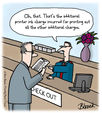Choosing Great Investments
- Mo Lidsky
- Jul 18, 2017
- 3 min read
...excerpt from Mo Lidsky's latest book, Partners in Preservation

Choosing best-in-class investments is difficult for many reasons. One, knowing the full range of options is very hard (perhaps even impossible). Two, the hardest part of this process is that these options must be considered simultaneously. For example, having seen twenty-five land development projects over a thirty-year career will be useful, but it is not quite as helpful as having compared those same twenty-five opportunities in a short period of time. A real-time comparison provides the most acute understanding of what a superior deal looks like and helps make better investment decisions.
A famous study conducted at Stanford University compared magazine ad designers working simultaneously and those working sequentially. All other things being equal, the ads that were designed simultaneously proved to be much more effective in achieving their goals than the designs that were done sequentially.
Having the luxury of apples-to-apples comparisons in real time will invariably improve our decision-making abilities. But only up to a point. There is a body of research that suggests that more choice actually has the opposite impact. In his book, The Paradox of Choice: Why More Is Less, Barry Schwartz notes that having too many choices actually reduces the likelihood of making any choice at all, as the chooser tends to fall into a decision paralysis, and if a choice is made, the plethora of choices reduces the satisfaction in the decision.
A safeguard against this choice overload, however, comes from having a high level of expertise or well-defined preferences. If a person is very particular about how a cup of coffee or a cocktail is made, for example, more options tend to increase satisfaction. Similarly, a study of Silicon Valley executives found that those presented with more choices in their field of expertise were actually able to make quicker and more efficient decisions.
This nuance of choice overload is experienced by everyone, every day, as we are all experts in our own preferences. Take, for example, shopping at a large grocery store. Every time we decide to turn in to an aisle of soft drinks, ice cream, or cereals in a supermarket, we subconsciously enter into expertise mode. In the cereal aisle, I, for example, will slip past the children’s cereals. In fact, I pass all sugary cereals on my way to my favorite muesli selections. I avoid those with almonds (allergy), and I look for a smaller box because it fits nicely in my cupboard. Even in an unfamiliar store without my usual brand, I can quickly go through my subconscious checklist, looking for the one with high protein and high fiber, one that doesn’t get too soggy in milk, not too sweet, but not as bland as chicken feed. If there’s a brand I trust, I will go there first. This entire process working almost instantaneously in the background entails hundreds of considerations, remembrances, comparisons, and overlapping decisions, but I have never had a problem choosing a cereal.
In less than a couple of minutes, we can deconstruct product categories and brands, cascade through subcategories and sub-subcategories, and funnel our process down to the dimensions and the most trivial of details to pick the item that best serves our interest. This incredible ability to achieve sophistication is inherent in all of us. Recognizing this capacity, the question must be asked, “What stops us or, more importantly, our advisors, from achieving this same level of sophistication in investing?” (Hint: the answer often involves some conflict of interest).









Comments